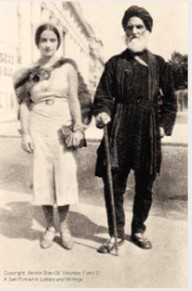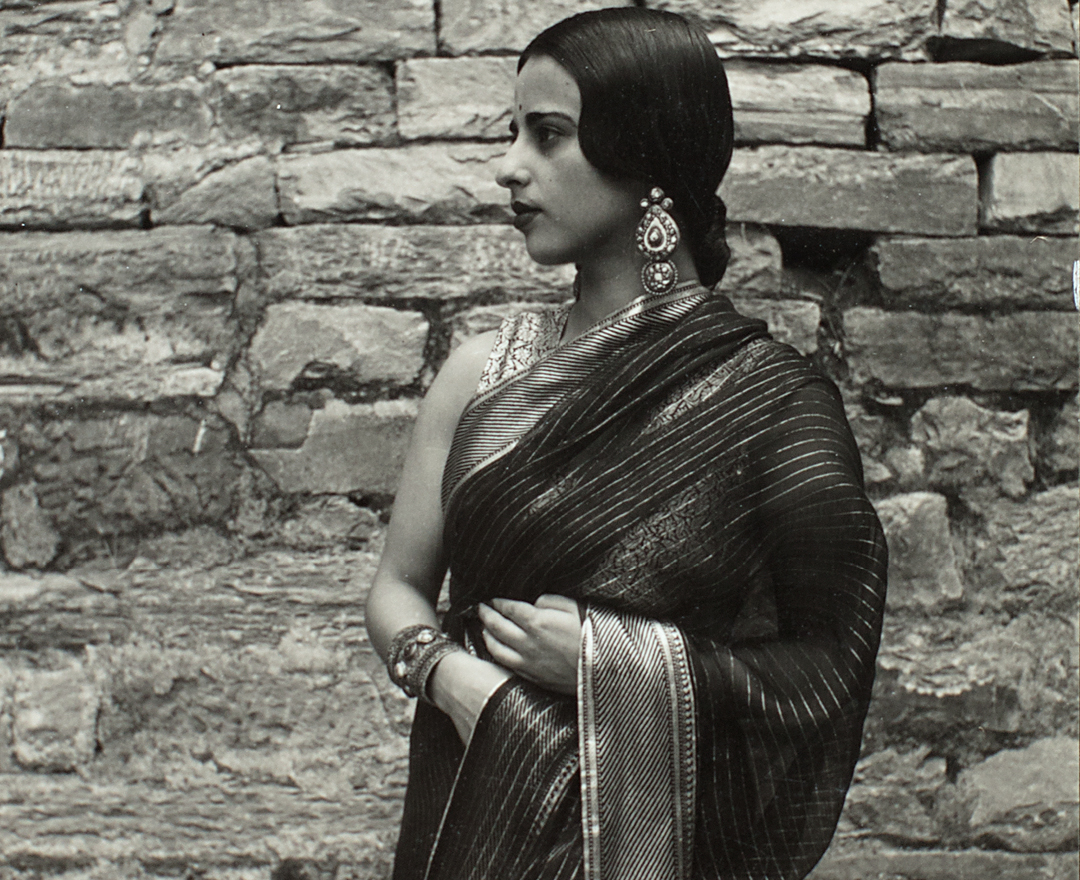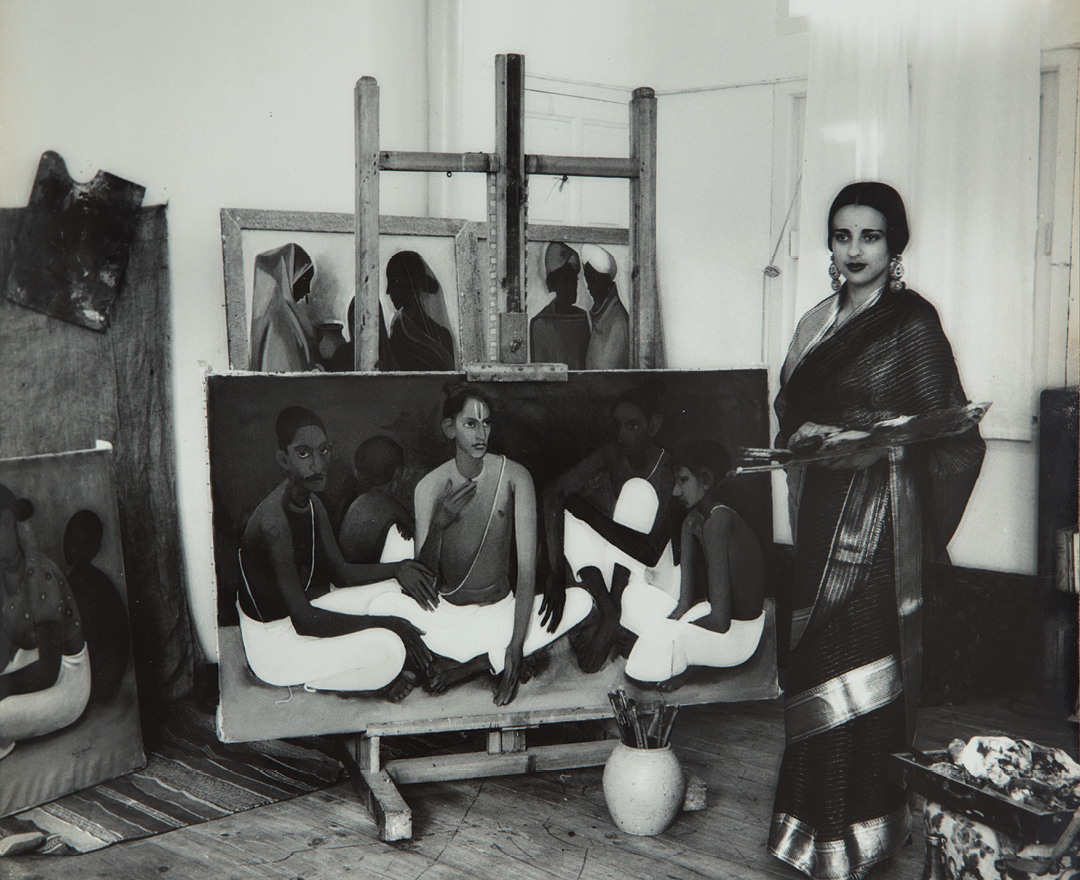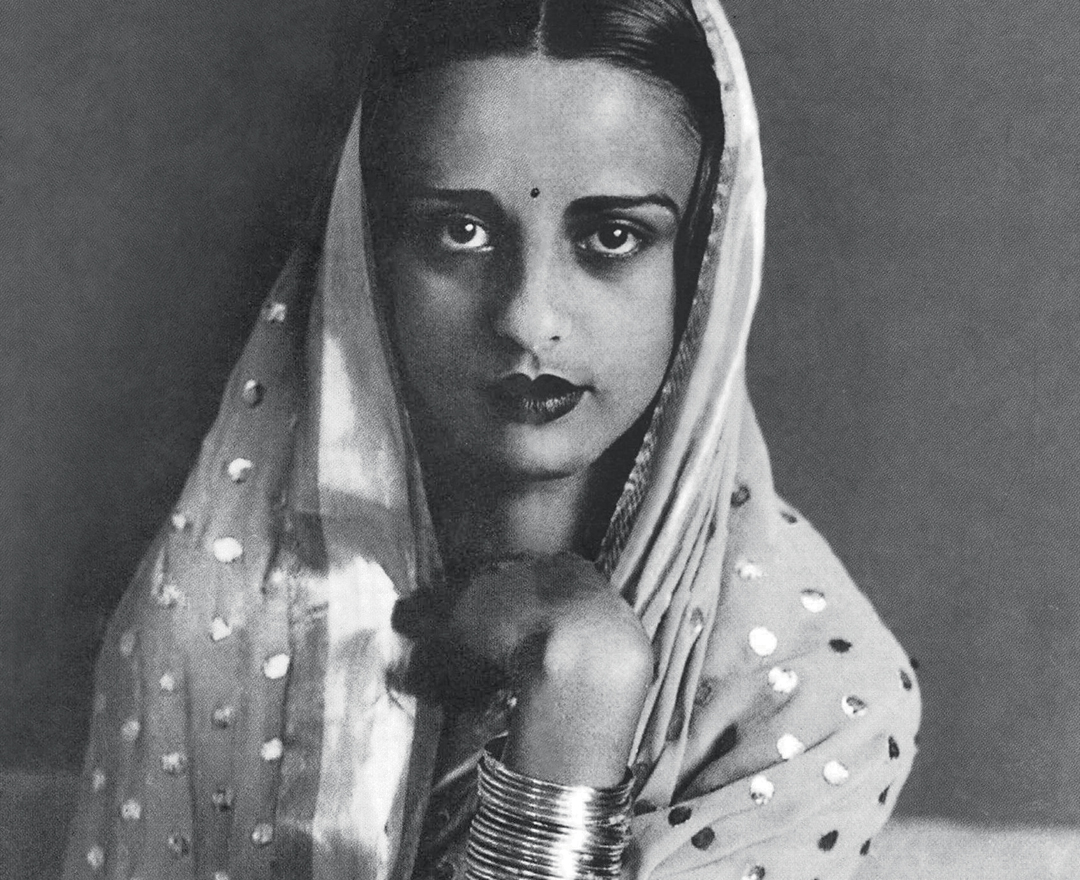1913

Born in Budapest on 30 January to Sikh father Umrao Singh Sher-Gil and Hungarian mother Marie Antoinette. She is christened Dalma-Amrita upon birth. Her father belongs to an aristocratic Sikh family of Lahore while her mother comes from a middle-class Hungarian family. Spends the first few years of her life in Hungary.
1914

Sister Indira is born on March 28, in Budapest.
1916
In September, the family moves to Marie Antoinette’s family home in Dunaharaszti, a popular holiday resort on the outskirts of Budapest.
Life in Hungary is frugal due to the ongoing World War I, but Sher-Gil grows up surrounded by affectionate family members—aunts, uncles, cousins—that results in deep emotional bonds. She goes on to develop a close relationship with her older cousin, Victor Egan, whom she would later marry.
1917
Is re-christened Maria Magelena by her mother fearing reprisal for the family’s part-Jewish origins.
1918

Spanish flu epidemic brings Sher-Gil very near her death in October.
1919
Is admitted to the local school at Dunaharaszti, where she draws using coloured pencils to illustrate Hungarian folk stories and fairy tales by the Grimm brothers and Hans Christian Andersen.
Starts writing her own poems and stories, and records events with coloured crayons.
Her talent is appreciated by the legendary actress Jászai Mari, writer Pastor Arpad, and the psychoanalyst Dr. Ujhelyi.
1920
On January 23, receives a certificate from her school in the name of Sher-Gil Maria Magdolna.
In June, the family moves from Dunaharaszti, first to Marie Antoinette’s sister’s house in Budapest, and then to the famous Margaret Island Grand Hotel on the Danube.
1921

On January 2, days before her eighth birthday, the family sets sail for India aboard S.S. Malva, from Marseilles to Bombay. They stop in Paris on the way as her mother wants to give her a quick tour of the world’s art capital.
The family lands in Bombay on February 2, staying in Delhi for two weeks, before proceeding to Lahore to stay with Sher-Gil’s uncle, Sunder Singh (Umrao Singh’s brother)—a powerful figure in Punjab politics—for a couple of months. The family eventually settles down in Simla.
They buy a house in Summer Hill at one end of the township of Simla. The house was built for the British viceroy and is called L’Holme.
The Sher-Gil sisters are schooled at home, learn English and French, and to dance and play the piano. Their father continues with his passion for photography.
1922

Continues to paint in watercolours. In her diary written this year, in English, she makes vivid observations of an Indian child bride.
1923
Paints her first responses to cinema and wins a first prize for art, a Rs. 50 cash award. She paints several impressions, mainly of women characters from films, such as Queen of Sheba, Messalina, Carmen, and from novels.
Italian sculptor Giulio Cesare Pasquinelli makes busts of Amrita and Indira; Pasquinelli has arrived in India after his appointment as court sculptor by Maharaja Bhupendra Singh of Patiala.
1924

Upon their mother’s insistence, the Sher-Gil sisters are taken to Genoa, Italy, for further education. They are admitted to the Santa Annunciata Paggio Imperiaion school in Florence, which Amrita notes in her diary as an ‘enormous, elegant but hateful school’.
In a diary entry dated 23 March 1924, young Amrita writes about her trip to Italy: ‘Oh, how our heart was aching [when] Apuka [father] went away from us [and] the ship started moving. And in a few hours we only saw the outlines of India, dear India where our only Apuka watched how our ship disappeared on the horizon…’
Several of her diary entries from Florence reveal that shifting to Italy was an ill-conceived project (on the part of her mother who had entered into a relationship with the Italian sculptor Giulio Cesare Pasquinelli). Sher-Gil revolts and the family eventually returns to India in June.
Pasquinelli doesn’t return to the Sher-Gil house but goes on to name his daughter Carla-Amrita-Indira Pasquinelli.
The sisters are admitted to Simla’s Jesus and Mary Convent school from where Amrita is expelled as she declares herself an atheist.
Soon after, Sher-Gil starts taking art lessons at home from the artists Hall Beven-Petman and Whitmarsh.
She continues to choose subject matters from among American romantic and German expressionist films, from her reading of Tolstoy and Dostoevsky, and from the music of Chopin, Beethoven, Tchaikovsky, and Debussy.
1926

Her uncle Ervin Baktay (Marie Antoinette’s brother), a student of Indian thought, comes to stay with the Sher-Gils in summer. A painter himself, he recognises the talent in his niece, and guides her to move away from her highly emotional early paintings to draw from reality, emphasising structure rather than naturalism.
1929

Upon the collective suggestions of Hall Beven-Petman and Ervin Baktay, and persuasion by Marie Antoinette, her father decides to send her to Paris to study art.
The family leaves Simla for Bombay in February and sets sail for Europe aboard the Austrian liner, The Lloyd. The ship anchors in Venice and the family travels around Italy—Lake Como, Bellaggio, Lake Lugano and Rome—before arriving in Paris by train.
Hungarian painter József Nemes, a friend of Ervin Baktay, suggests Amrita to enroll at Grande Chaumière and not the other better known art schools of Paris as she has little academic training in art. She joins under Professor Pierre Vaillant who does her portrait before she leaves the school a few months later.
Along with sister, she is also admitted to the Alfred Cortot school of music, but leaves after a few months as she feels she cannot master two creative disciplines.
In October, she enrolls as a part-time student under Lucien Simon at École des Beaux-Arts.
1930

In May, she sees an exhibition of Rabindranath Tagore’s works at Theatre Pigalle, Paris; this is the first public exhibition of the works by the Nobel laureate. Sher-Gil exhibits at the same venue at the same time, with the Beaux-Arts Students Circle of Women. Then seventeen-year-old Sher-Gil remarks on Tagore’s works: ‘I like his drawings better than his poetry even…’ Years later, in 1937, she would write to Karl Khandalavala: ‘I am fond of Rabindranath Tagore’s work and am of the opinion that he is the only one of the Indian artists who has anything to say.’
In June, travels to Hungary with the family. Subsequently, she spends every summer there, till 1934.
Paints Portrait of a Young Man, a likeness of fellow student and one-time lover, Boris Tazlitsky.
1931
Her portrait of Boris Tazlitsky wins her a prize at an exhibition at École des Beaux-Arts.
1931-41

Makes 172 oil paintings in the last decade of her life.
1932

Paints Young Girls in June; it wins a Gold Medal at the Grand Salon the following year. Her sister Indira poses for the painting.
1933

Visits National Gallery in London in June and encounters the paintings of Paul Gauguin.
Leaves École des Beaux-Arts in July and sets up studio with friend Marie-Louise Chassany, whose portrait she had earlier painted.
Paints Reclining Nude, Professional Model, Sleep. Sister Indira poses for Sleep, a bold, nude rendition for a woman artist of her time.
Is elected associate member of Société Nationale, its youngest member ever, and the first Asian.



























